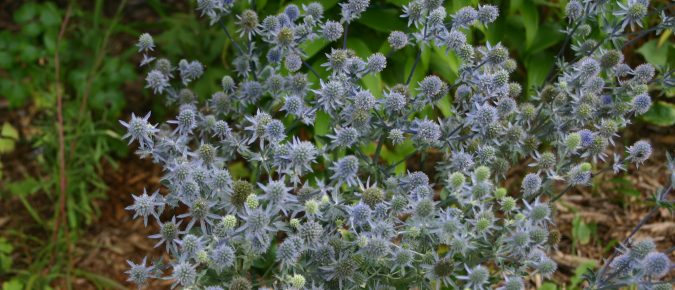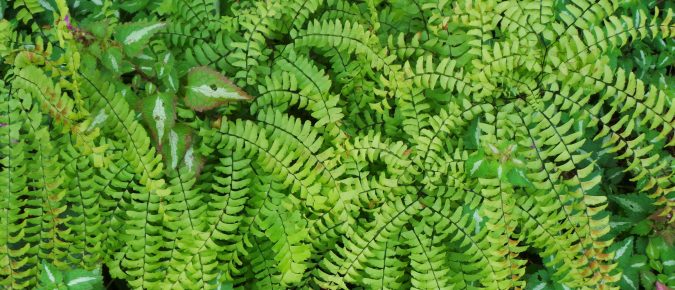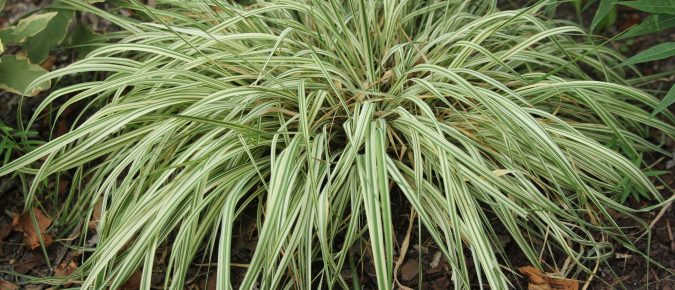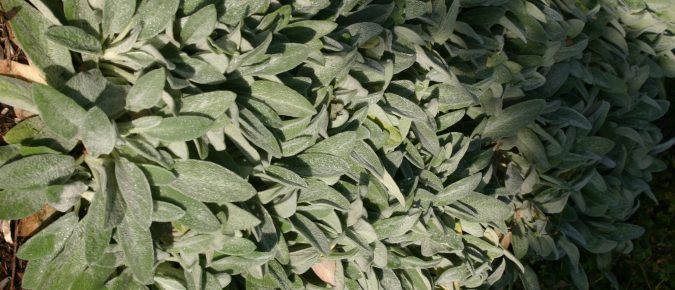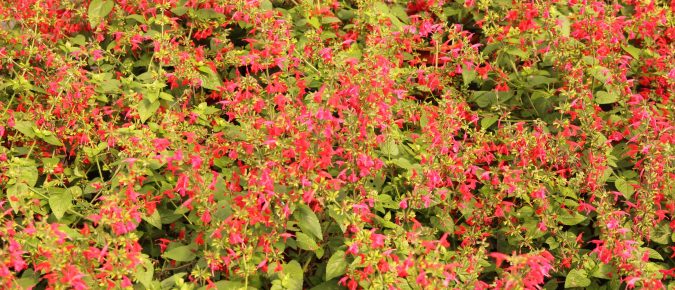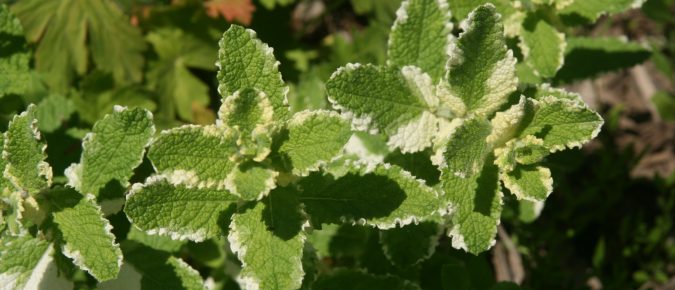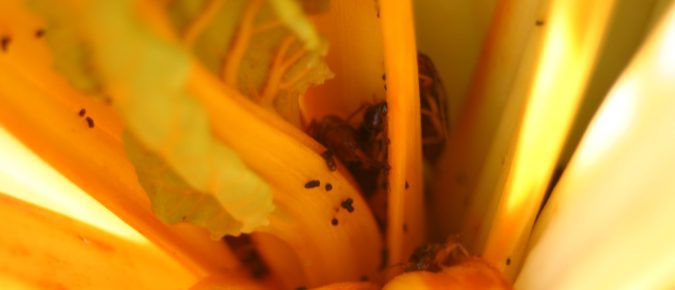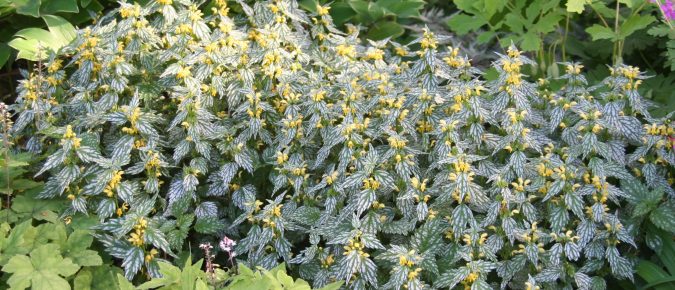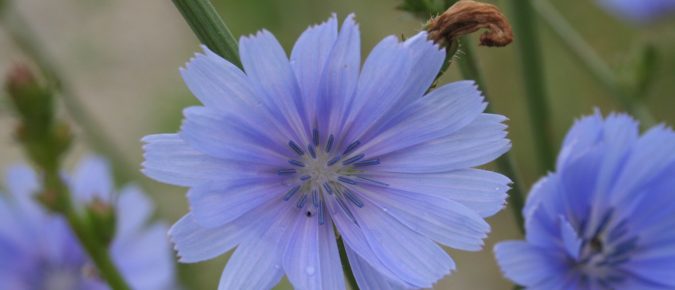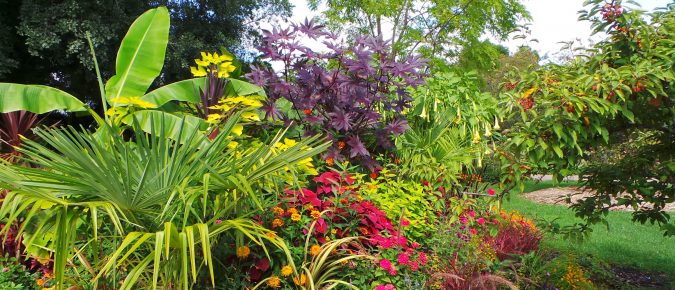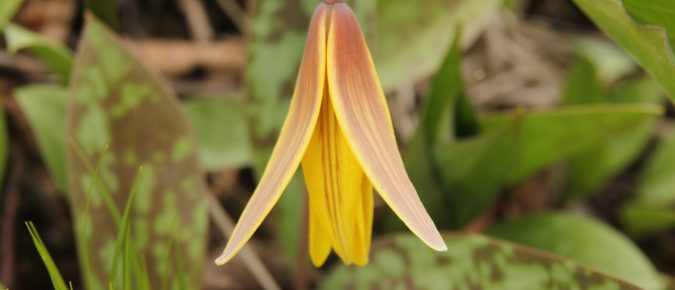Looking for a native plant with winter interest? Rattlesnake master is an herbaceous perennial from the prairies whose unusual golf ball-like flowers heads are rather sculptural. Although at home in native gardens, it also works well as an accent in the perennial border. To learn more about this plant, read this article…
With finely cut foliage, northern maidenhair fern is an attractive addition to shade gardens with rich moist soil. Adiantum pedatum is just one of many maidenhair ferns, although the only one hardy in our area. It has distinctive, fine-textured fronds on dark-colored stems up to 2 feet tall. Learn more about this native species in this article…
Bloody dock is an attractive plant with a network of brightly colored veins on its wide, lance-shaped leaves. This rosette-forming plant is easily grown as an annual or perennial in sun to partial shade and can even be used in a water garden. Find out more about Rumex sanginueus by reading this article…
If you’re looking for a small, well-behaved ornamental grass to add a splash of color to the landscape, you can’t go wrong with the purple moor grass cultivar ‘Variegata’. This selection of Molinia caerulea, a bunchgrass with airy flower spikes, offers striped cream and green foliage. To learn more about this attractive plant, read this article…
Lamb’s ears (Stachys byzantina) are frequently used in Midwestern gardens for their soft, silvery foliage. One cultivar that is a little different than the rest is ‘Cotton Boll’, so named for the unusual flower spikes that resemble cotton balls arranged along the stem. To learn more about this sterile cultivar with nice foliage, read this article…
Add some airy sprays of colorful flowers to your gardens with this pretty plant. A perennial in its native habitat from Central America to the southeastern US, scarlet sage is used as an annual or bedding plant in cooler climates. Several cultivars offer bright and pastel blooms on sturdy plants. To learn more about Salvia coccinea, read this article…
Pineapple mint is a fuzzy-leaved plant that can be used as an herb or included in the garden as an ornamental for its variegated foliage. To learn more, read this article…
Many people are repulsed by the sight of an earwig and its intimidating back end. But those pinchers are mostly just for show, and these insects won’t harm people. They are primarily scavengers feeding at night, but they will eat some living plants and may cause damage at times. To learn more about these “icky” insects, read this article…
Yellow archangel is a hardy perennial in the mint family related to Lamium (deadnettles). Generally only variegated cultivars of this plant are grown, primarily for their foliage, although they do have interesting flowers for a short time every year. To learn more about Lamiastrum galeobdolon, read this article…
Do you recognize those blue flowers along the roadside that will keep blooming until frost (if not mowed off)? That’s chicory, an escaped, naturalized European plant that has been used for food and forage since ancient times, although most Americans know it just as a weed. To learn more about Chicorium intybus, read this article…
Looking to add drama to your landscape? Castor bean is a fast-growing tender perennial with huge leaves that can be used as a seasonal annual in cooler climates. Chose from a number of varieties of this East African native selected for their ornamental value to make a bold statement in your garden. To learn more about this plant, read this article…
With big yellow flowers, the Erythronium hybrid ‘Pagoda’ is a great addition to shady gardens. Developed from two species of native North American wildflowers, this spring bloomer will naturalize in woodland gardens and combines well with bleeding heart, columbine and hostas. To learn more about this garden ornamental, read this article…

